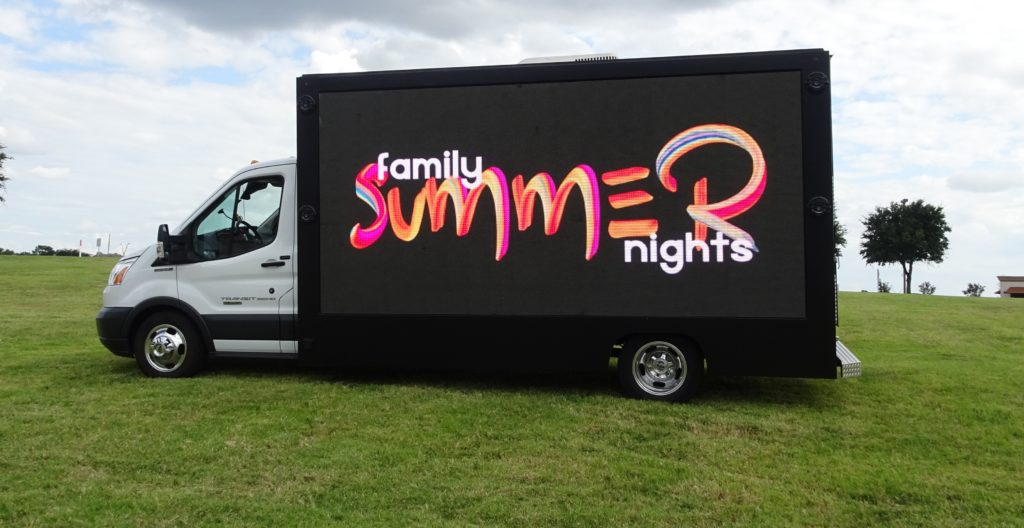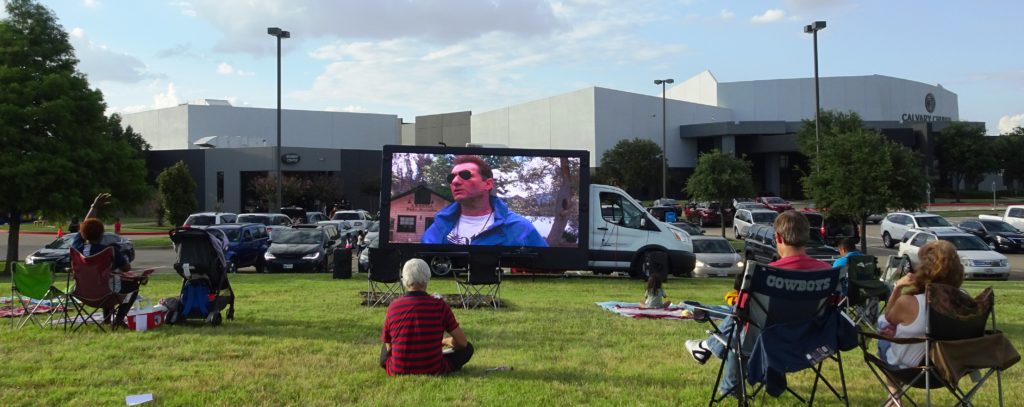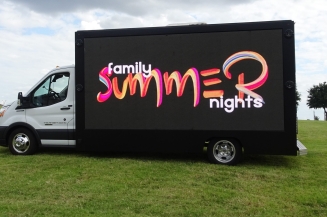Accelerate Your Advertising Strategy: A Deep Dive into the Diverse Types of Mobile Billboards!
In today’s fast-paced world, where consumers are constantly bombarded with advertisements, standing out from the crowd is becoming increasingly challenging for businesses. As a result, advertisers are continually seeking innovative ways to capture their target audience’s attention effectively. One such dynamic and eye-catching advertising approach gaining popularity is different types of mobile billboards.
Mobile Billboards and their Popularity
Mobile billboards are moving advertisements mounted on vehicles that travel around specific locations, ensuring maximum exposure to potential customers. These different types of mobile billboards stand out due to their dynamic nature and ability to reach places where traditional ads cannot.
Types of Mobile Billboards
Static Mobile Billboards
Static Mobile Billboards are the traditional form of mobile advertising and have been around for decades. These different types of mobile billboards consist of large display boards mounted on trucks or trailers, which travel designated routes or park in high-traffic areas. Unlike their stationary counterparts, these mobile billboards can move around the city, making them visible to a broader audience.
Pros:
- Cost-Effectiveness: Static mobile billboards are generally more affordable than other mobile advertising forms, making them accessible to businesses with smaller budgets.
- Easy to Create and Deploy: Creating static billboard designs is relatively straightforward, and once the artwork is ready, the billboards can be quickly mounted on trucks and deployed.
- High Visibility: Static billboards are large and eye-catching, ensuring high visibility and making it easier for passersby to notice the advertisements.
Cons:
- Limited Interactivity: Static billboards need more interactivity, which means they cannot engage audiences as effectively as digital billboards.
- Static Messaging: The messages on static billboards cannot be changed once they are deployed, limiting their adaptability for time-sensitive promotions.
Digital Mobile Billboards
With the advancement of technology, Digital Mobile Billboards have emerged as a cutting-edge and interactive form of mobile advertising. These billboards have LED screens that display dynamic and visually engaging content. Advertisers can remotely update the displayed content in real-time, allowing for greater flexibility and customization.

Pros:
- Interactivity: Digital mobile billboards offer interactivity, allowing advertisers to use motion graphics and videos to engage audiences more effectively.
- Real-Time Updates: Advertisers can remotely update the content on digital billboards in real-time, aligning them with ongoing campaigns or reacting to current events.
- Eye-Catching Displays: The vibrant and dynamic displays of digital billboards are more likely to grab attention and leave a lasting impression on viewers.
Cons:
Higher Cost: Digital billboards can be more expensive to produce and deploy than static billboards, making them less accessible for smaller businesses.
Potential Technical Issues: Technical glitches or malfunctions with the digital displays can impact the advertisement’s effectiveness.
Glass Wall Display Trucks
Glass Wall Display Trucks take mobile advertising to a new level of creativity and innovation. These trucks have transparent glass panels on the sides, providing a 360-degree view of the interior, where products or experiences are showcased. The glass walls create a unique and immersive experience for the audience, drawing attention and curiosity.

Pros:
- Experiential Marketing: Glass wall display trucks provide a unique and immersive experience for the audience, enabling experiential marketing campaigns.
- 360-Degree Visibility: The transparent glass panels offer a 360-degree interior view, maximizing visibility and engagement.
- Product Showcasing: Businesses can showcase products in a real-life setting, allowing potential customers to interact with them up close.
Cons:
- Higher Cost: Glass wall display trucks can be expensive to design, build, and operate, making them more suitable for larger marketing budgets.
- Limited Routes: Due to their size and unique design, glass wall display trucks may have fixed routes and accessibility to certain areas.
- Logistical Challenges: Planning and executing campaigns with glass wall display trucks require careful coordination and logistical considerations.
Conclusion
Different types of mobile billboards offer diverse advertising options for businesses looking to accelerate their advertising strategy. Static Mobile Billboards provide a straightforward and cost-effective way to convey brand messages, while Digital Mobile Billboards add interactivity and flexibility to campaigns. Glass Wall Display Trucks take the experience to the next level, offering an immersive and captivating platform for product showcases and experiential marketing.
By incorporating the various types of mobile billboards by Texas Mobile Advertising into their advertising mix, businesses can effectively engage their target audiences and stand out in a crowded marketplace.
Back to Blog
